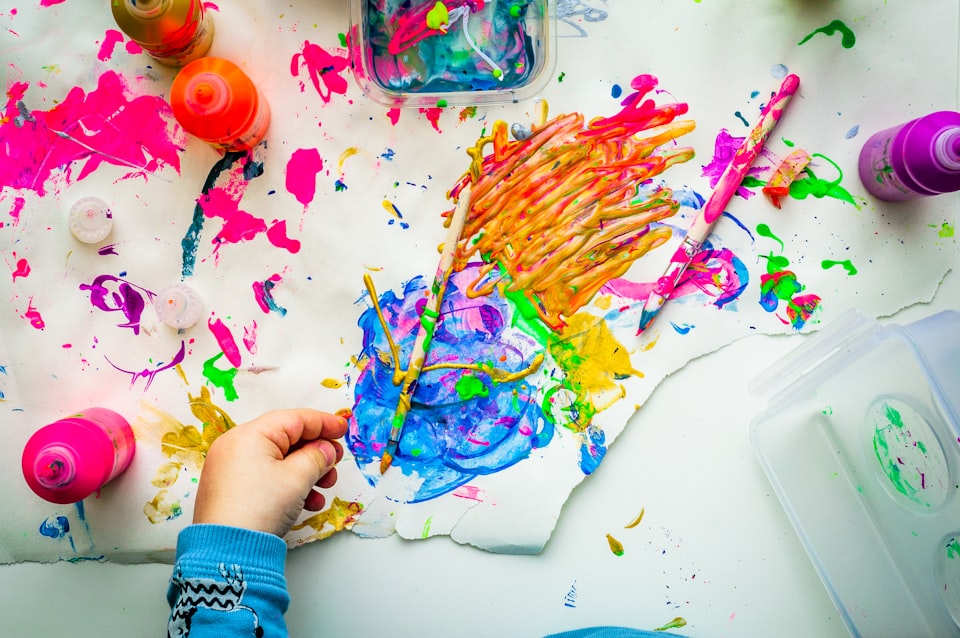How to Unlock Your Creative Genius - Carl Nordgren

In my work helping folks become their most creatively entrepreneurial selves I frequently resort to hyperbole to reveal a full truth and then revel in its significance — a few years back one of my daughters gave me a t-shirt with ‘Hyperbole, the best thing ever’ across the chest — but I promise there’s no hyperbole in the title of this blog.
1. A bit of background on creativity research
A major research study that came out of an employee recruitment project for NASA discovered that 98% of us are born with such remarkable creative abilities for imagining and developing solutions for problems or challenges that when NASA identified that level of creative competence in their scientists and engineers internally they were called Creative Geniuses.
Our creative genius is our common ground? I say yes.
Perhaps you want more proof of our inherent creative and entrepreneurial qualities. A few years back an economist studied UN labor statistics and determined that in the Developing Nations just shy of 75% of all employment was self-generated — folks looking at the conditions in their villages or neighborhoods, identifying a problem, developing a solution, and then executing successfully.
And we can be sure, can’t we, that they do this without education in entrepreneurial strategies, likely with very little education of any sort, and without financial capital. They do this by applying their natural abilities to think creatively and behave entrepreneurially.
Perhaps along with these quantitative statements about our natural creative genius you will enjoy a qualitative one.
2. The qualitative case for your creative genius
What personal memories spring from this wonderful quote from Phylicia Rashad?
“Before we could talk, we sang. Before we could write, we drew. And as soon as we could stand, we danced”
My wife is an early childhood educator and entrepreneur and I have participated in many of her programs and have seen hundreds of children play with their unlimited imaginations, their tireless curiosity, their natural bias for creative action, and their constant conversion of a failure into a new understanding.
Remember when you were like that? Doesn’t the eyeball test of watching kids play support the research, that when we were young we all engaged the world with creative and entrepreneurial predispositions and natural talents?
Are you that way now?
I don’t know what your experience has been but I never bought the idea long-held in Western Culture that creativity was the special gift of a privileged few. Throughout my 40+ year career as a creative professional and an entrepreneur the one constant was I took on talent recruitment and development and I found, and continue to find, depth and breadth of creative and entrepreneurial abilities all around, in abundance, everywhere, and every time I go looking for it.
This is the first blog of a new series for Kahana Creators — when I was introduced to Kahana I was immediately attracted to their view of you, the users of their products, that they see you and respect you as Creators. I always begin any new course or workshop or consulting and coaching gig by making the same point, that we are all Creators.
My work is all about calling us to the view and practice that intentional development of our creative capacities and entrepreneurial instincts and behaviors is the most important thing we can do because we all face a future of unknowable unknowns; because business leaders value creatively entrepreneurial qualities in employees above all others; and because our most satisfying experiences of our full human nature, the times are brains are fully optimized, occur when we are thinking creatively and behaving entrepreneurially.
3. The quantitative case for your creative genius
Since confidence is crucial to creative growth let’s reinforce yours — especially if you are someone who hasn’t been identifying yourself as a creative or entrepreneurial person — by telling you more about the NASA research.
The research is rooted in NASA’s heroic acceptance of President Kennedy’s dramatic challenge back in 1962. Standing on stage in the football stadium at Rice University on the 102° sun he challenged us to become the first nation to send a man to walk on the moon and return home safely, all before the end of the decade.
It was a heroic acceptance because when NASA took on this challenge they didn’t even have the underlying knowledge to shape conceptual strategies of how that could be accomplished, strategies needed to direct and drive technology development.
Appreciating the challenge NASA realized they needed to hire the most creative and innovative and entrepreneurial scientists and engineers they could find and asked George Land and Dr. Beth Jarman to develop an assessment tool to measure important core creative cognitive processes.
When the tool was completed NASA first tested it on their employees; they would see if the tool aligned with their judgment of employee creative performance.
It appeared to be very accurate — those already delivering highly innovative and breakthrough work scored the best and NASA found the middle and bottom-level assessment performers consistent with their modest to minimal innovation contributions.
In 1968, Land and Jarman took the same assessment tool they delivered to NASA and used it to measure the creative performance of 1,500 4 and 5-year-old school children.
Intrigued, the researchers assessed this cohort every few years and the scores dropped each time until in their early 20’s only 2% of them performed at NASA’s Creative Genius level. The researchers’ conclusion was that this decline is because they went to school and were told there was only one right answer to a question or problem and, even worse, there was only one way to get to that right answer — that we were taught to not be creative in our approach to learning.
That insight is supported by a longitudinal study done by professor and leadership consultant Brene Brown.
But there is great news here: because this remarkable creative capacity and these valuable entrepreneurial instincts are core to who we are, they don’t go away. I’ve worked with many thousands of folks from all walks of life who when I met them were adamant that they weren’t creative, often declaring themselves that way upon introduction.
Working with them we first identify the many places they have in fact been creative — for instance helping highly analytical folks understand how their analysis of the data revealed an unexpected shift in the data patterns that led to a new insight into the situation is a highly creative act — and then help them renew and develop their creative entrepreneurial qualities.
If the NASA research shows we can teach you to not be creative my work proves to me — to many who experience it — that you can teach yourself to be more creative, more entrepreneurial, more innovative, more adaptive, and more generative. All it takes is your intentionality, and your determination that from this point forward you will be and become your most creatively entrepreneurial self, and the growth begins.
4. Tips for boosting your creative abilities
For now, I will leave you with some tips on boosting your creative performance, to integrate into your daily intentions, and have chosen those that are very effective and easiest to add to your day.
- Stare at Green for 20 seconds. Research out of the University of Munich discovered that green is the only color that can have an immediate impact on your creative performance. Study participants who stared at red, blue, yellow, or gray before they completed four different creative challenges performed no better than the control group. But the folks who stared at green for 20 seconds had a 25% improvement in their creative performance. Follow-up research has validated the original study. I have a green card sitting next to my laptop and take a half dozen 20-second breaks every day to study it, meditate on it, absorb it, and focus on the green of it. And before I sit down to write, I stare at the color green.
- Integrate the two hemispheres of your brain. To get into your most productive creative state you want both hemispheres of your brain working together, the left’s analytical dancing with the right’s nonlinear, the left’s logic and language capacities engaged with the right’s imaginative and visual capacities. There are two very simple physical activities proven to get your two brain hemispheres ready to work as one.

Walk. University of Stanford research found your brain is fully integrated within a few minutes of reaching your natural stride and that the latent effect is meaningful.
The other is quick. Stand up. Pat your left shoulder with your right hand five times. Then pat your right shoulder with your left hand five times. Repeat that cycle five times. Then do the same with one hand to the opposite knee, five times. Because your left hemisphere manages the movements of the right side of your body, and your right hemisphere manages the left side, by crossing the vertical median and making contact you’ve forced the two hemispheres to begin to communicate with each other.
I have some fun with this one; I tap out a rhythm and lift my knee as my hand reaches for it, meeting about waist high, and make it feel like a bit of a dance.
